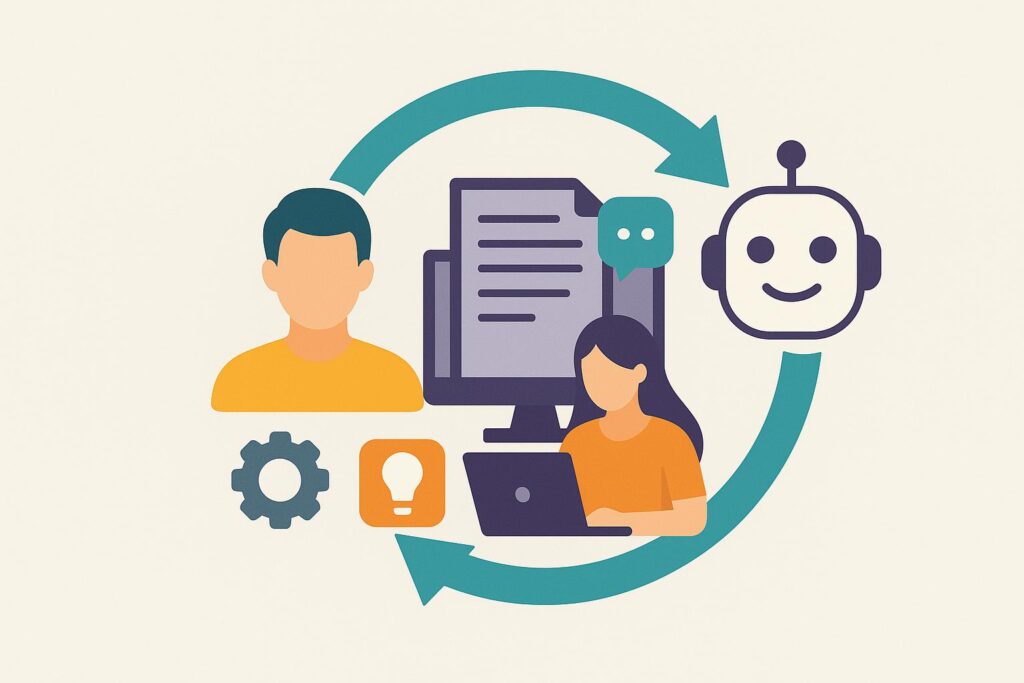Artificial Intelligence (AI) is transforming the way businesses operate—streamlining processes, reducing costs, and unlocking new opportunities for innovation. But while AI excels at handling large-scale data and repetitive tasks, it often struggles with nuance, ambiguity, and ethical complexity.
That’s where Human-in-the-Loop (HITL) automation comes in—a smart, strategic approach that combines the strengths of both human judgment and machine efficiency. HITL isn’t just a safety net for AI systems; it’s a blueprint for building more accurate, trustworthy, and adaptive solutions.
What Is Human-in-the-Loop Automation?
Human-in-the-Loop automation is a system design where humans and AI work together in a collaborative loop. While machines perform tasks like processing data or making predictions, humans step in to validate, correct, or guide those decisions when needed.
This model is especially effective in areas such as:
- Data labeling and training machine learning models
- Customer service bots that escalate complex queries
- Document processing with high variability
- Fraud detection systems requiring expert validation
- Medical diagnostics needing human confirmation
Rather than trying to replace human input, HITL leverages it to make AI more reliable and adaptable.
Why It’s the Smartest Way to Use AI
1. Increases Accuracy and Reduces Risk
AI models, no matter how advanced, can make mistakes—especially when dealing with incomplete, biased, or noisy data. With HITL, human oversight ensures errors are caught early, reducing the risk of faulty decisions or reputational harm.
2. Enables Continuous Learning
When humans correct or validate AI decisions, that feedback becomes part of the training loop. Over time, the system becomes smarter, more efficient, and better suited to the specific context in which it’s deployed.
3. Builds Trust and Transparency
Human oversight adds a layer of accountability to AI decisions. This is crucial for building user trust, especially in high-stakes environments like healthcare, finance, or law where explainability and compliance are essential.
4. Solves Edge Cases AI Can’t Handle
AI performs well with patterns it has seen before. But edge cases—rare or unfamiliar scenarios—require human judgment. HITL ensures these outliers are handled properly, rather than being dismissed or mishandled by the algorithm.
5. Supports Human Roles, Doesn’t Replace Them
HITL automation empowers employees by offloading repetitive tasks and allowing them to focus on more strategic, creative, and customer-facing work. It’s about augmenting human intelligence, not eliminating it.
Key Use Cases in IT and Business
Human-in-the-Loop automation is proving invaluable across a variety of sectors:
- IT Support: AI triages tickets; complex issues are routed to human agents.
- Document Processing: AI extracts and processes data; humans validate exceptions.
- Cybersecurity: AI monitors for threats; analysts investigate and respond.
- Model Deployment: Human testers verify AI outputs for quality and fairness.
- Customer Engagement: Chatbots handle FAQs; humans intervene in sensitive interactions.
Conclusion
AI offers immense power—but it’s most effective when guided by human insight. Human-in-the-Loop automation bridges the gap between efficiency and empathy, scale and accuracy, innovation and responsibility.
As organizations look to scale their digital capabilities, HITL offers a clear path forward: smarter automation that learns, adapts, and improves with human guidance. It’s not just a technology strategy—it’s a competitive advantage.

